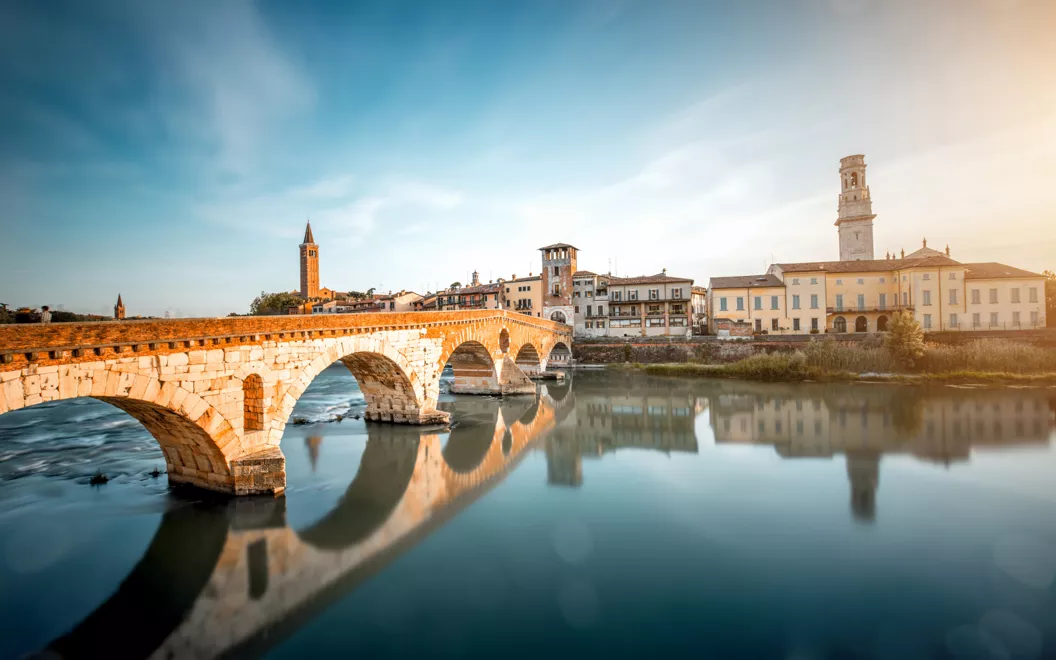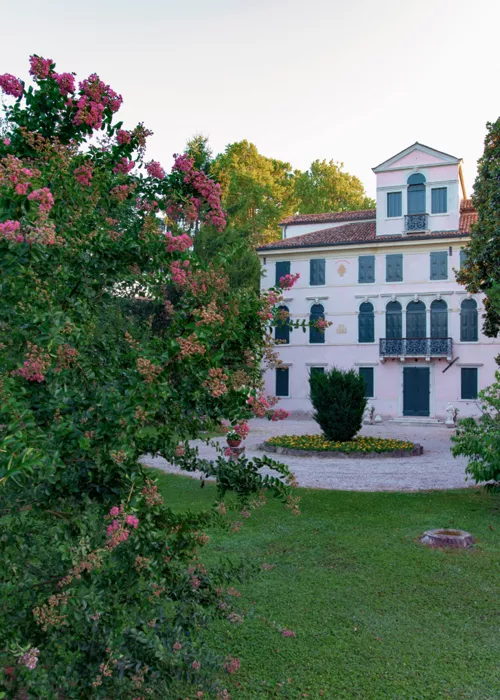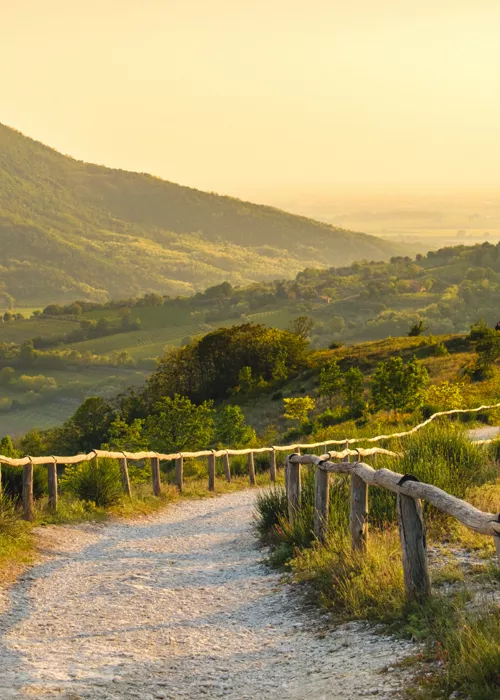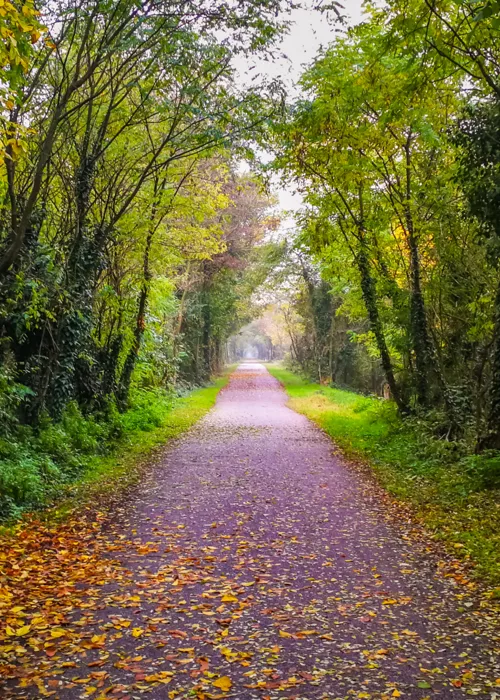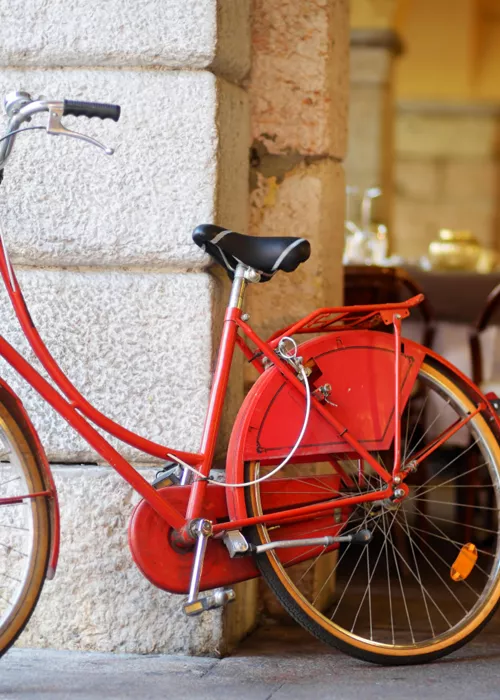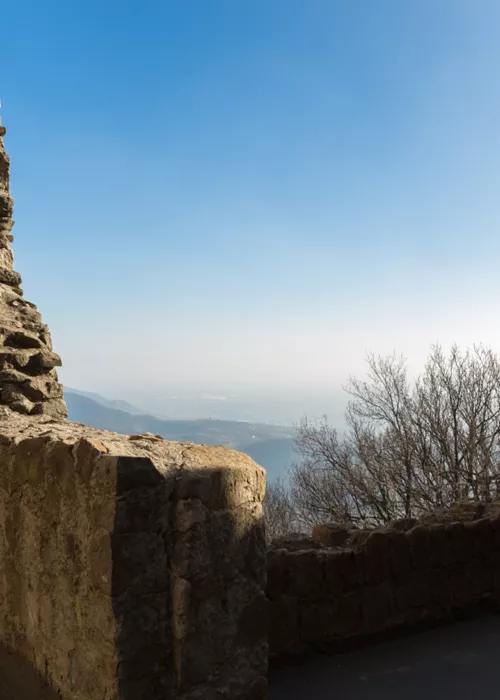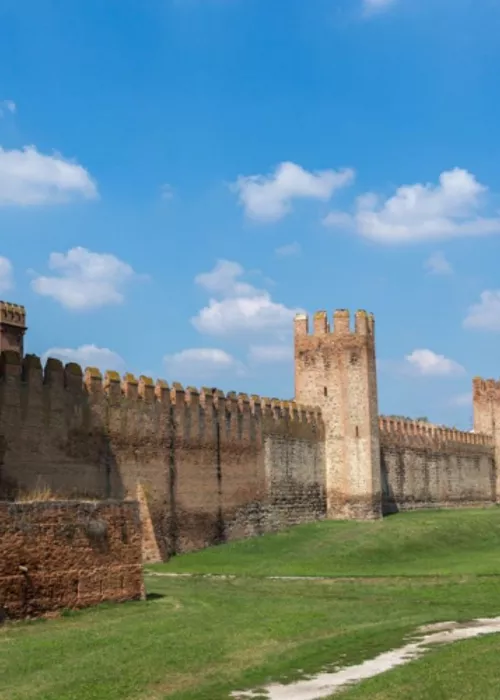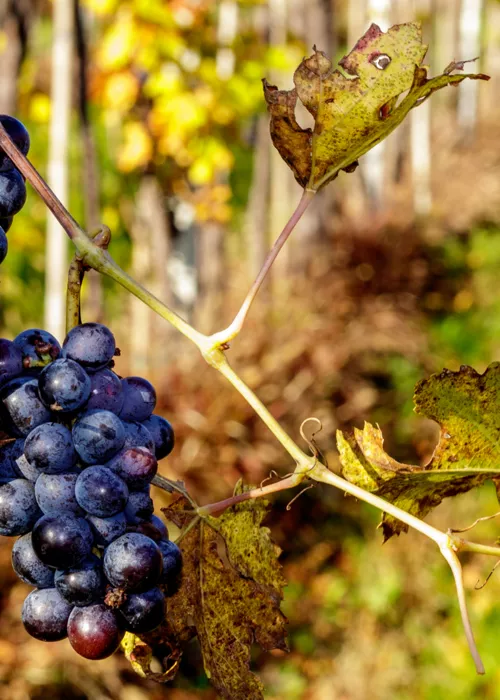Juliet's house

The itinerary of the most romantic places in Verona begins just a stone's throw from Piazza delle Erbe in Juliet Capuleti's house, a 13th-century dwelling attributed to the Cappello or Cappelletti family, later known as the Capulets. In the courtyard there is a bas-relief in the shape of a hat that alludes to the family name, with Capello meaning ‘hat'. According to tradition, Juliet grew up here. And here is the famous balcony from which the young lover spoke to her Romeo.
Beyond the gate, cross the corridor leading to the courtyard to admire the statue of Juliet by artist Nereo Costantini. A legend promises good luck in love to anyone who touches her breast. You can also visit the interior of the house, which reproduces the atmosphere of a mediaeval home thanks to the furnishings and costumes from Zeffirelli's film Romeo and Juliet.
Romeo's house

A few minutes from Juliet's house, on Via delle Arche Scaligere, stands a crenellated building that historically belonged to Cagnolo Nogarola, but according to Shakespeare's tale was the Montagues' House.
Today it is a private home and cannot be visited, but you can appreciate it from the outside: it is one of the best preserved mediaeval houses in Verona. On the ground floor there is an inn where you can stop for lunch and taste Lesso con Pearà, a meat stew, a typical dish of Verona.
Credits: Testus
Arche Scaligere

The Arche Scaligere are the tombs of the Scaliger family, but in the story of Romeo and Juliet the crucial episode of the tragedy took place here.
Here the young Capulet staged her death by drinking the potion prepared by Friar Lawrence. The Arche Scaligere stand next to the Church of Santa Maria Antica, a few steps from Piazza dei Signori.
The Volto Barbaro

The small alley known as Volto Barbaro is a key place in the story of Romeo and Juliet. It is situated on the north side of Piazza delle Erbe and is a narrow passage between the Mazzanti Houses.
This alley often goes unnoticed, but it was the scene of a violent episode in the dispute between the Montagues and Capulets. Here, the death of Romeo's friend Mercutio at the hands of Juliet's cousin Tybalt occurred. A plaque commemorates the episode in Shakespeare's tragedy.
Palazzo della Ragione

Finish the first day's tour at Palazzo della Ragione, between Piazza delle Erbe and Piazza dei Signori. At the time of the tragedy, Bartolomeo della Scala, lord of Verona, resided here. In these rooms he condemned Romeo to exile for the murder of Tybalt, who was killed to avenge Mercutio.
If you want to enjoy an escape into art during your Romeo and Juliet tour, today the palace houses the Achille Forti Gallery of Modern Art.
Porta Borsari

The second day of the itinerary in the city of lovers starts from Porta Borsari, one of the city gates along the Roman walls. Originally called Porta Iovia, its present name is derived from bursarii, the guards who collected the duty.
Here, there is another plaque linked to the Shakespearean tragedy that recalls the clash between Tybalt and Romeo.
The bust of Shakespeare

From Porta Borsari take Via Oberdan, strolling past small shops and artisan workshops as you reach Piazza Bra. On the wall, looking towards the Arena di Verona, you will find the bust of William Shakespeare sculpted by Sergio Pasetto, with a quotation from the play Romeo and Juliet. A stop to pay homage to the author of the troubled love story is not to be missed.
Juliet's Tomb

Juliet's tomb is located just outside the city walls, in the crypt of the Monastery of San Francesco al Corso, which now houses the Cavalcaselle Fresco Museum. From Piazza Bra it is a short 10-minute walk.
Go down a stone staircase into the crypt to reach the simple porphyry sarcophagus housing Juliet's remains.
Retracing the places of Romeo and Juliet's love story is the most romantic way to see this city while walking hand in hand with your loved one. It is a weekend in one of the most fascinating Italian cities that you will never forget.

